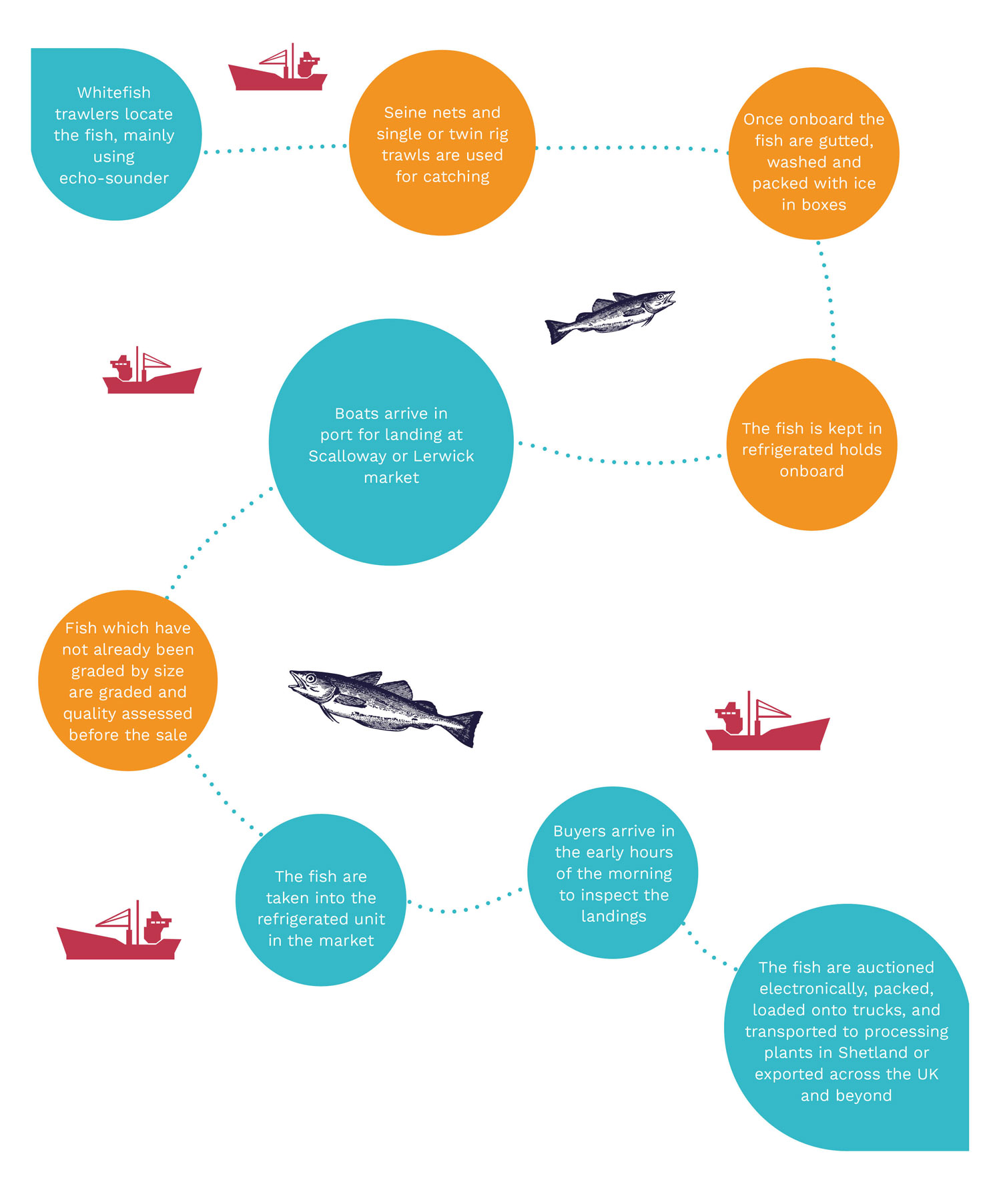Whitefish
Whitefish is a vital part of shetland’s economy
A variety of species, including cod, haddock, whiting, and monkfish, is landed at the fishing ports of Lerwick and Scalloway.
Today’s discerning market seeks premium quality fresh product. The quality of fish caught in Shetland waters exceeds customers’ expectations and is widely available in top restaurants, hotels and fishmongers.
Cod
- Adult cod are active predators, feeding on a variety of fish and shellfish species including sand eels, whiting, haddock, and even small cod
- Cod fish stocks are recovering and have increased significantly in Shetland waters in recent years
- Still very important commercially


Haddock
- Less fertile than cod (female haddock are known to spawn up to 1.8 million eggs, unlike cod at 9 million)
- Commonly found in depths up to 150 metres
- Silvery grey colour with a distinctive black spot above the pectoral fin described as a ‘thumbprint’, ‘St Peter’s mark’ or the ‘Devil’s thumbprint.’

DID YOU KNOW?
Cod can grow up to 1.5 metres long and have two distinct colour phases – grey/green and reddish/ brown

Monkfish
-
Dubbed the ugly fish with a large head and ferocious looking teeth
-
Occur in a wide range of depths, down to about 1,000 metres
-
Tagging by NAFC Marine Centre has shown they can swim impressive distances – for example, from Shetland to Iceland.
-
They are very unusual in that the eggs are released in a large gelatinous ribbon that may be up to 2m wide and 10m long. This floats near the surface until the larvae hatch.
Ling
- Demersal fish often found on hardy rocky bottoms and natural reefs
- Ling can live up to 25 years and have reached 2 metres in length
- They are not fussy when it comes to food and will eat just about anything
- Salted ling roe is a delicacy in Spain


DID YOU KNOW?
Monkfish have an expandable stomach which means they can eat fish as large as themselves.

DID YOU KNOW?
A giant ling weighing more than 67lbs was reeled in off Shetland in 2013
Megrim
- Flatfish occurring in depths between 50 and 400 metres but most common in depths around 200 metres
- The stock in the North Sea has expanded in recent years
- Has a relatively large mouth and is an active predator
- Has a high commercial value
- Left sided flatfish. A rare right sided specimen was caught off Shetland in 2009.


Lemon Sole
- Lives on gravelly bottoms at depths of about 20 – 200m
- Right sided flatfish
- Upper surface is reddish brown in colour, mottled and the underside is white
- High value species

DID YOU KNOW?
Being flat helps megrim hide from their prey on the seabed.

DID YOU KNOW?
Lemon sole is mainly caught to the south of Shetland
Whiting
- Caught in demersal mixed fishery
- Important species to Shetland whitefish fleet
- Spend their first few months on the upper layers and then move deeper, towards the seabed
- Feed on smaller fish, crustaceans and other invertebrates


Saithe, ‘pitlocks’
- Caught in demersal mixed fishery
- Usually caught at depths of 200 metres
- Move in dense shoals
- Offshore migration of young fish usually occurs in springtime.

DID YOU KNOW?
Whiting can live for up to 20 years
From sea to plate: whitefish

